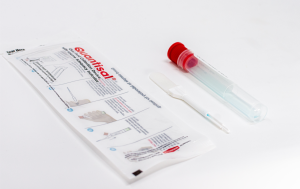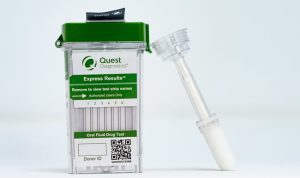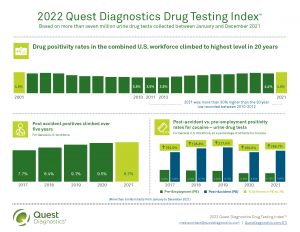 Between 1887 and 1919, methamphetamine, also known as meth, was developed by researchers in labs in Europe and Asia. Originally synthesized from ephedrine, and later amphetamine, methamphetamine was not widely used until World War II. The drug first gained popularity as a diet pill, but was later heavily consumed by the German army under the name Pervitin. In fact, many German soldiers were high on methamphetamine as they went into battle. This stimulant boosts energy, allows for sleepless nights, and, in some cases, increase aggression. Today, people continue to use the drug despite its widely known short and long-term side effects.
Between 1887 and 1919, methamphetamine, also known as meth, was developed by researchers in labs in Europe and Asia. Originally synthesized from ephedrine, and later amphetamine, methamphetamine was not widely used until World War II. The drug first gained popularity as a diet pill, but was later heavily consumed by the German army under the name Pervitin. In fact, many German soldiers were high on methamphetamine as they went into battle. This stimulant boosts energy, allows for sleepless nights, and, in some cases, increase aggression. Today, people continue to use the drug despite its widely known short and long-term side effects.
Common short-term side effects include:
- Increased attention and wakefulness
- Decreased fatigue and appetite
- Euphoria and rush
- Increased respiration
- Rapid or irregular heartbeat
- Hyperthermia
These short-term side effects are typical for most stimulant drugs, however; methamphetamine is especially destructive after long periods of abuse.
Severe, long-term side effects include:
- Addiction
- Difficulty feeling any pleasure
- Confusion
- Insomnia
- Violent behavior
- Psychotic symptoms
- Reduced motor speed and impaired verbal learning
Although the opioid crisis makes daily headlines, data from the Quest Diagnostics Drug Testing Index™ (DTI) shows a trend of increasing methamphetamine positivity. Between 2013 and 2017, positivity skyrocketed in the Midwestern and southern regions of the U.S., which includes states, such as Ohio, Kentucky, Indiana, and Alabama.
Awareness and education continue to play a significant role in helping people understand what drives substance abuse disorders, specifically methamphetamine. Organizations, such as the National Institute on Drug Abuse, shed light on the importance of prevention in and outside of the workforce.
To learn more about drugs of abuse, visit our website.
 Your Privacy Choices
|
Privacy Notices
|
Terms
|
Language Assistance / Non-Discrimination Notice | Asistencia de Idiomas / Aviso de no Discriminación | 語言協助 / 不䈚視通知
Your Privacy Choices
|
Privacy Notices
|
Terms
|
Language Assistance / Non-Discrimination Notice | Asistencia de Idiomas / Aviso de no Discriminación | 語言協助 / 不䈚視通知



















Common short-term side effects include:
These short-term side effects are typical for most stimulant drugs, however; methamphetamine is especially destructive after long periods of abuse.
Severe, long-term side effects include:
Although the opioid crisis makes daily headlines, data from the Quest Diagnostics Drug Testing Index™ (DTI) shows a trend of increasing methamphetamine positivity. Between 2013 and 2017, positivity skyrocketed in the Midwestern and southern regions of the U.S., which includes states, such as Ohio, Kentucky, Indiana, and Alabama.
Awareness and education continue to play a significant role in helping people understand what drives substance abuse disorders, specifically methamphetamine. Organizations, such as the National Institute on Drug Abuse, shed light on the importance of prevention in and outside of the workforce.
To learn more about drugs of abuse, visit our website.